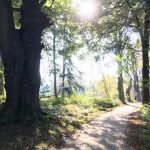Duno – Estate
Also known under the name Duunoog.

Location
Located in Gelderland, south of Doorwerth and west of Heveadorp on the moraine lies the Duno estate. It is a beautiful location, with views of the south-facing mountain, flood plains and overgrown by forest with several streams.
Hiking
Thanks to a pole route it is easy to take a walk through the estate, starting at the castle Doorwerth at Fonteinallee 2b, Doorwerth.
Many of the hiking trails have been constructed to have little height differences. With the construction of the park they wanted to take into account the peace that tourists were looking for at that time.
Mountainbiking
There is also a route especially for mountain bikers.
Description of the current location
The location on the moraine makes Duno special. Crossed with streams it is unique in high low, wet dry contrasts.
The old location of the mansion is still visible. With some searching, you can find remnants of the entrance of the house on the basis of the blue pieces of stone.
The Azelealaan is together with remnants of the teahouse and the entrance gate memories of old times. It is in bloom in May and June and well worth a visit.
The estate shows remnants of the coppice industry: dividing trees and coppice stoves. Particles formed a natural fence of a coppice parcel. These were cut this way so that they grow in thickness.
As well as that, beech chop wood occurs here, which is not common in the Netherlands.
From here, with a clear sky, you could see the Eusebius Church in Arnhem and the football stadium Gelredome.
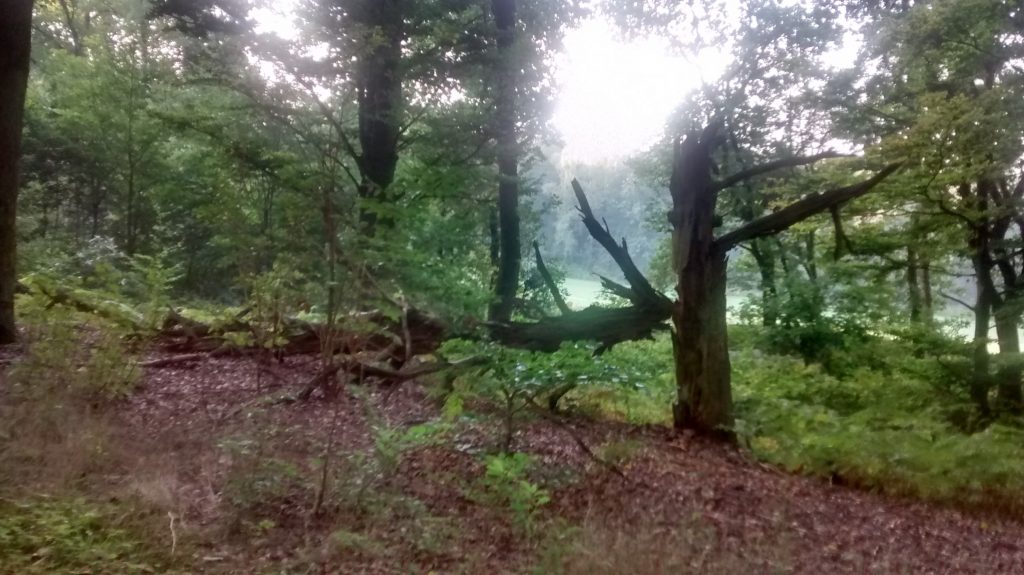
History
De Ringwalburg de Hunnenschans
With a ford in the Lower Rhine at the foot of the these hills. Even before Castle Doorwerth was built, this strategic position was used for a Hunnenschans.
This medieval wall with a dry moat provided the foundation for a double wooden palisade filled with sand. Not only did this give a strategic advantage, but also a safe haven for local residents.
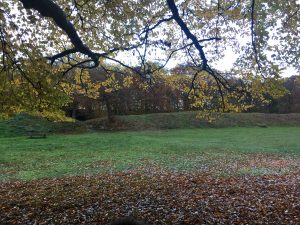
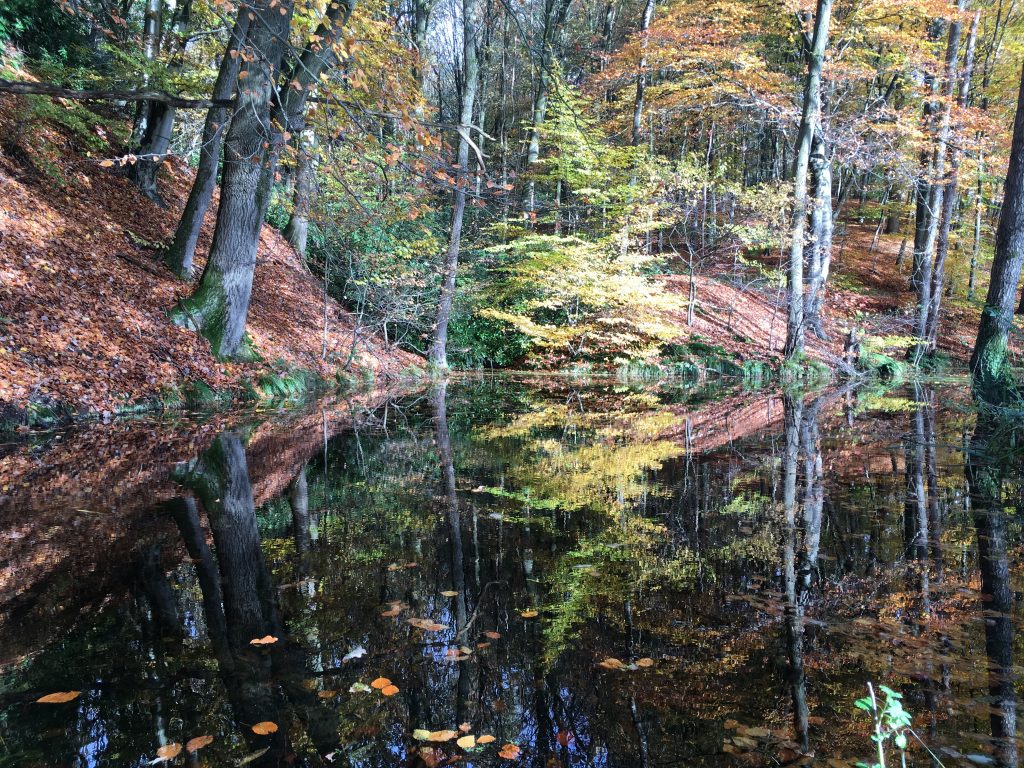
Time spirit
In the 18th and 19th centuries, the surroundings of Oosterbeek and Doorwerth attracted more and more well-to-do citizens for their natural beauty. Industrialization and urbanization created a growth of the middle class. These have opportunities for traveling and building outhouses. The moraine and the non-Dutch appearance of this environment is a popular environment.
Westerbouwing, Bato’s wijk and Duno are estates that emerge during this period.

Construction
Duno is laid out as a landscape park in the 18th century, initially with a gazebo, tea dome, rosarium, green belvedere and rockeries.

Country house
in 1794 Mr. A.F.O. Blombe Vatebender, director of the Heerlickheid Doorwerth, built a country house on this estate.
Inn
In 1801 it is mentioned that it served as an inn.
Louis
In 1807, former captain-in-the-sea Wijnand de Grote and Rosalie C.L. the Vignon. lived here together with Meinard Johan Macare, former bookkeeper of the East India Company.
This bookkeeper received King Louis on July 18, 1808. Even he showed his admiration for the natural beauty of this environment. Used the word “Cascades” and enjoyed the view over the Betuwe.
1831 – 1843
The estate was owned by J. F. Kroese.
Baron van Brakell
Baron van Brakell bought the estate in 1843. He owned castle Doorwerth for 7 years and he rented out the Duno mansion.
The costs for maintenance were so high that decline occurred. The Baron sold it and it changed from owner for several times until it was auctioned in 1888.
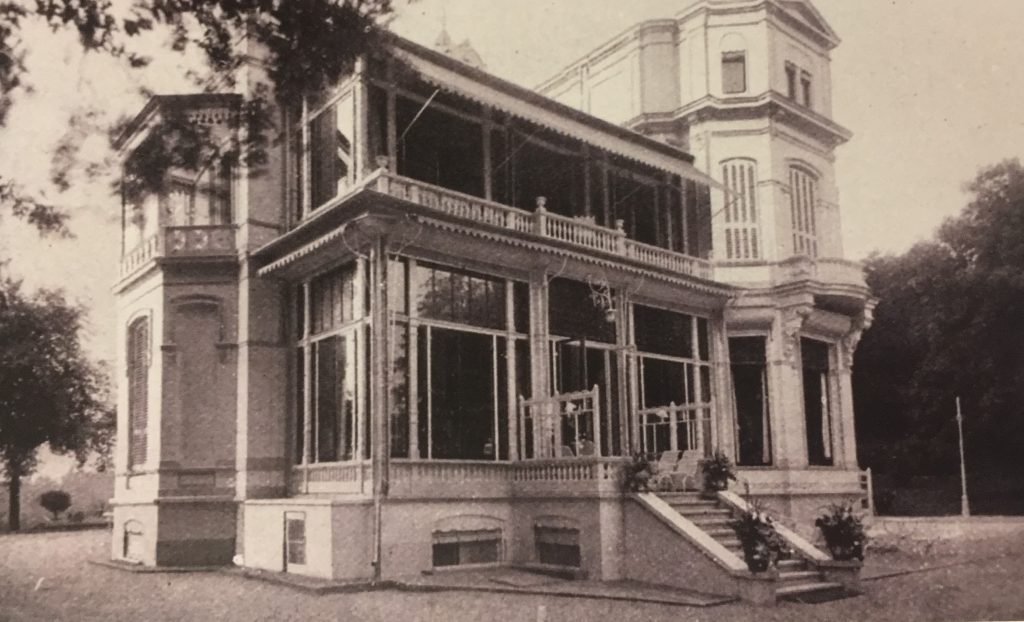
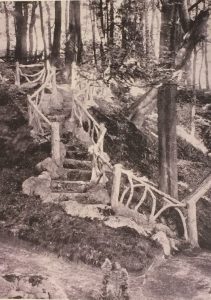
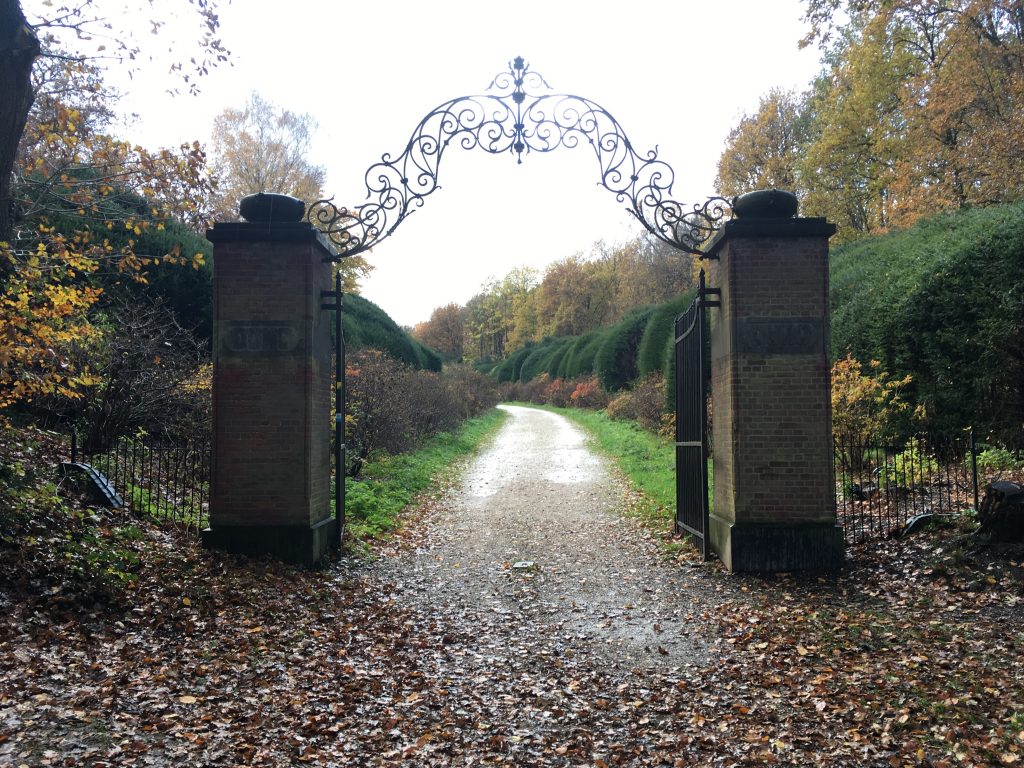
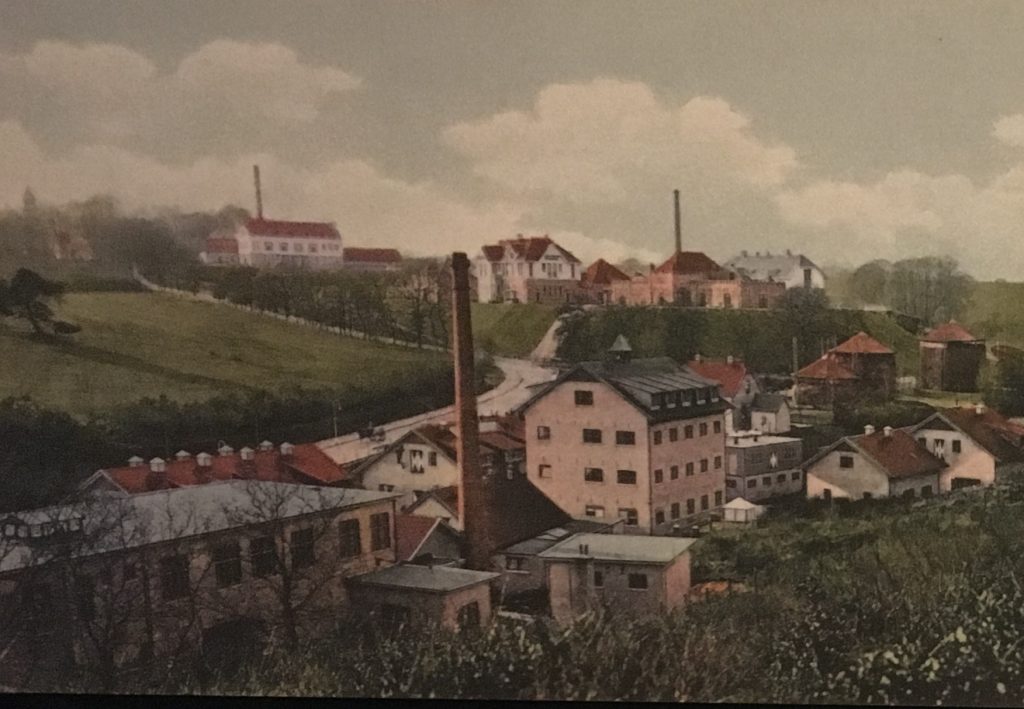
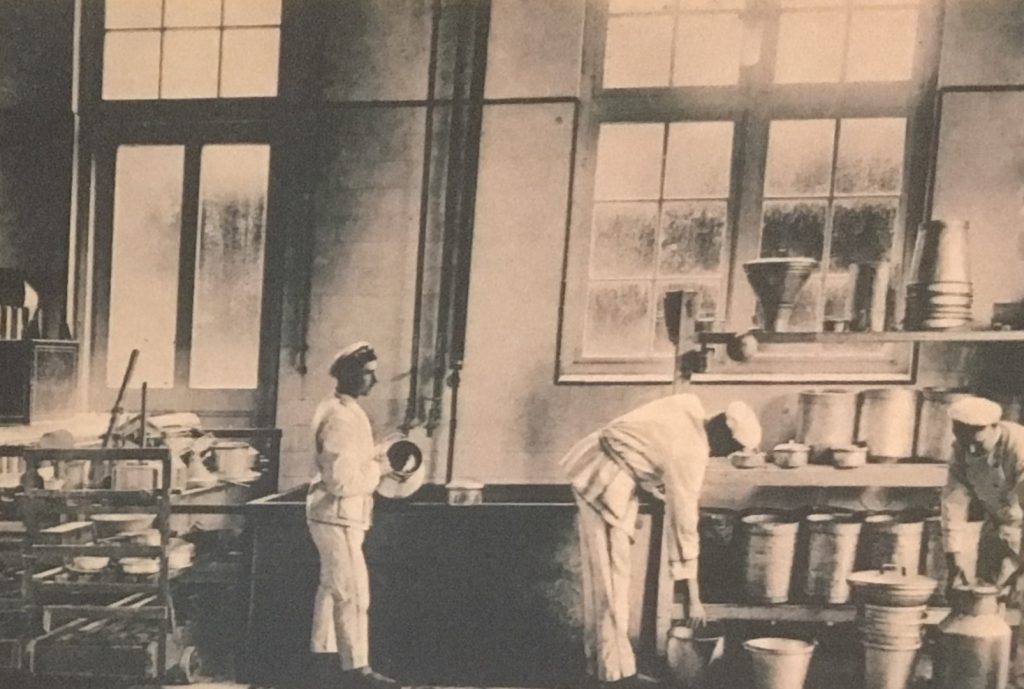
Joseph Wilhelm Frederik Scheffer (1846-1917)
The Cocoa trader bought Duno in 1888. He was married to the daughter of Coenraad Johannes van Houten. Coenraad was a chocolate manufacturer with its own factory in Amsterdam. Coenraad was also an innovator in the field of chocolate manufacturing.
In 1876 Joseph became procurator and in 1883 he became co-partner of the business of his in-laws.
His wife died in 1893. , and for the next 14 years Joseph’s relationship with his in-laws was deteriorating and therefore bought out of the company.
Joseph with that wealth decided to respond to a problem of that time. He wanted to produce pure milk. Until then, milk was a source of disease. That is why he founded a model farm and factory.
At the current location of the Heveadorp, he founded “Duno model farm and milk factory House ter AA” in 1908.
Hevea provides space for the Seelbeek. This water was not only used for cows as drinking, but the milk was also kept cool in it, and naturally to keep the stables clean. An old postcard from that time described it with “Every morning the cows are reassembled, brushed and the tails are also washed”.
Unfortunately for Joseph he did could not make the production of cleaner milk profitable. This was partly due to the increasingly popular pasteurization of Louis Pasteur. He, therefore, sold a part of his estate.
Dirk Frans Wilhelmi (1877-1936)
This gentleman from Goningen bought part of the estate Duno to expand the rubber factory that he owned. His father had extended his work as a saddler to the rubber factory.
Dirk converted the stables into a factory space and within a year 250 people worked there, including 50 minors. These workers had come over from Groningen.
On the south side of the hill ridge (current Dunolaan) he built houses with names of the origin of rubber: Celebes, Bornea, Java and Sumatra. These were where the first Hevea villagers lived.
Odo of Vloten
The tea planter bought the estate at a public auction. For him too, it was financially hard to keep Duno afloat. In 1932, he gave away the estate to the Geldersch Landschap.
Hotel
The Geldersch landscape leased the nineteenth-century house to a hotel operator.
Destruction
In the autumn of 1944, in Operation Market Garden, the villa and hunter’s house was destroyed, probably by artillery fire. Not only were the houses destroyed, the damage to nature was considerable.
Front
Duno became part of the front after Operation Market Garden. The Allies had come to the other side of the river and trenches were constructed that ran through Duno from Arnhem to Wageningen.


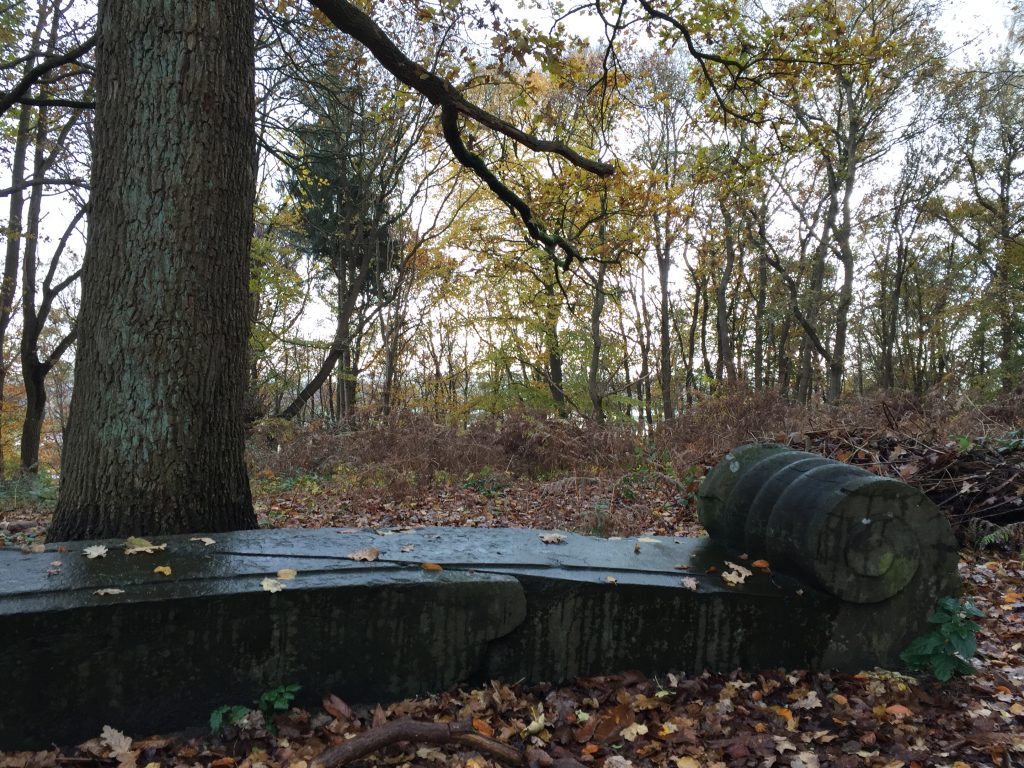
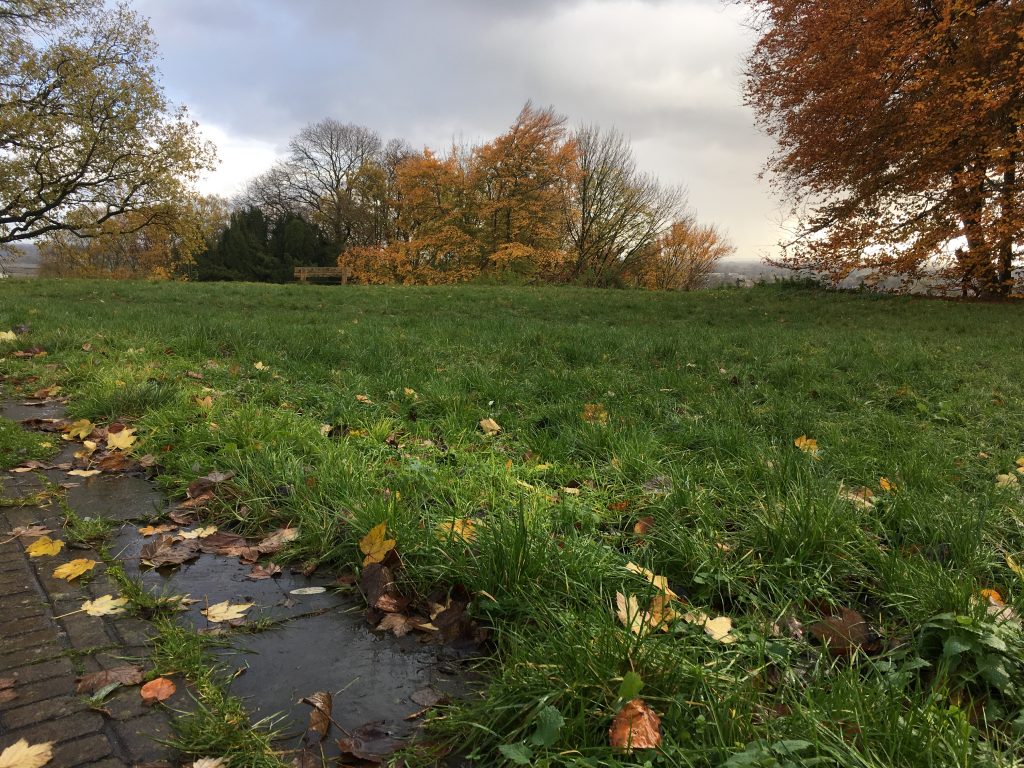
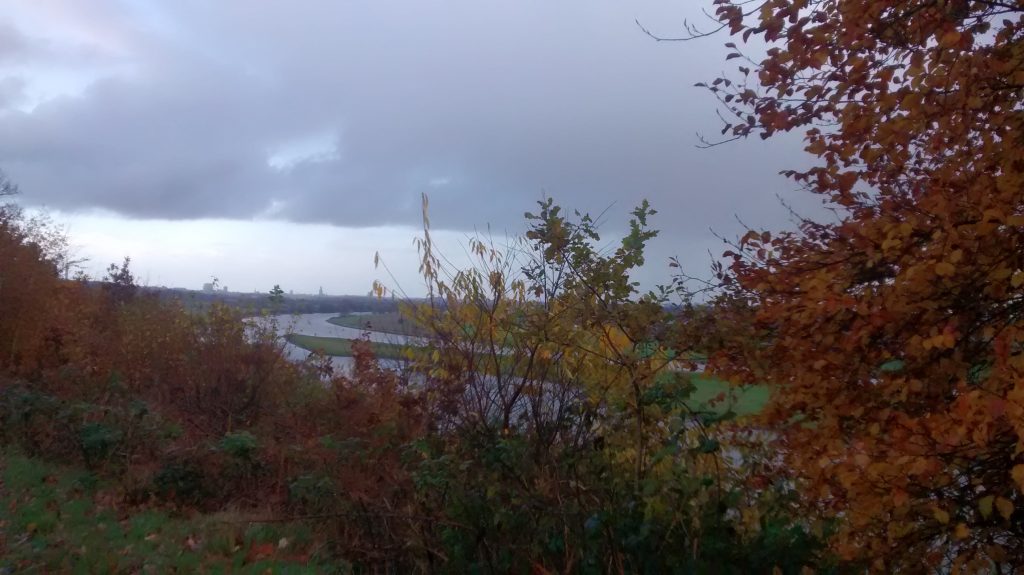
After the war
Despite the beautiful location, the country house was never rebuilt after the war. The only thing that is still visible today are remnants of the entrance gate and tea dome.
1965
Since this year Duno is an archaeological national monument.
Recovery
The cascade waterfall together with some views were restored by the Geldersch Landschap, and so were the Duno and other bridges and stairs. At the same time, work was done to prevent erosion of the moraine.
Terrace
The Geldersch Landschap is working on a terrace at the location of the manor from the 19th century..

